It’s been over a year since 215 million gallons of wastewater was pumped into Tampa Bay to stop a leak at Piney Point, a former phosphate-processing facility in Manatee County.
Explore our timeline to take a look back at the long and troubled history of the site and to catch up on what’s been happening lately.
Background
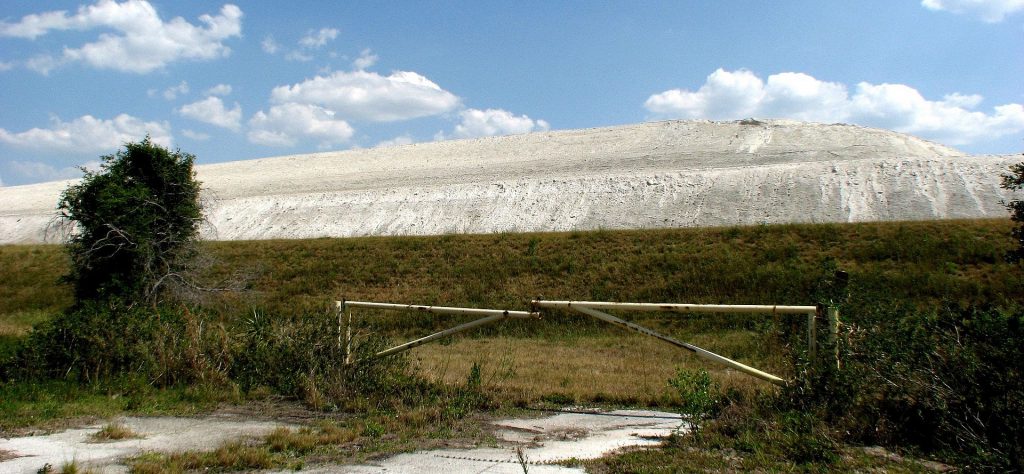
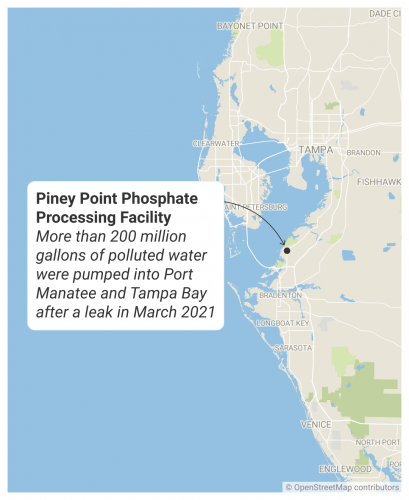
After processing phosphate rock — a common ingredient in fertilizer — materials like calcium sulfate, gypsum, uranium, thorium, radium and a gas called radon are left behind along with wastewater at sites like Piney Point. This mixture of solid wastes is called phosphogypsum, and it is normally stored in piles, or stacks. Polluted water is often kept in lined reservoir ponds.
The Piney Point crisis was triggered in March 2021 when a leak in the liner caused a partial breach in the reservoir’s containment walls. To avoid large-scale collapse and lower water levels to prevent major flooding, untreated, acidic wastewater was pumped into Tampa Bay.
While the Florida Department of Environmental Protection (FDEP) concluded Piney Point’s wastewater was not radioactive, conservation organizations have raised concerns over its elevated levels of nitrogen and phosphorus. Excessive nutrients like these could have been a factor in worsening ongoing toxic algal blooms and fish kills.
Hundreds of millions of gallons of wastewater remain at Piney Point, and total cleanup may not be completed until 2024. Stakeholders say proactive measures are necessary to stop this situation from happening at waste sites elsewhere in the state: out of 27 phosphate mines in Florida, nine are still currently active.
Timeline of Events
Click the following link to explore an interactive version of this timeline: Piney Point Timeline
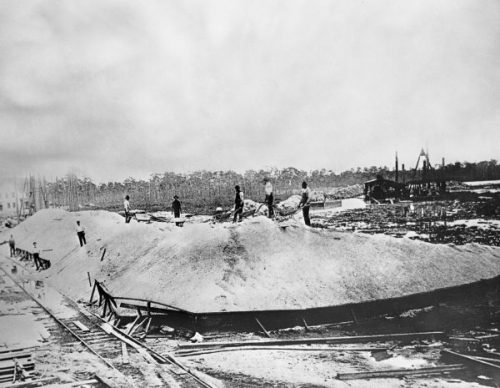
1966
- Piney Point is first built by the Borden Chemical Company. The facility processes phosphate rock into fertilizer.
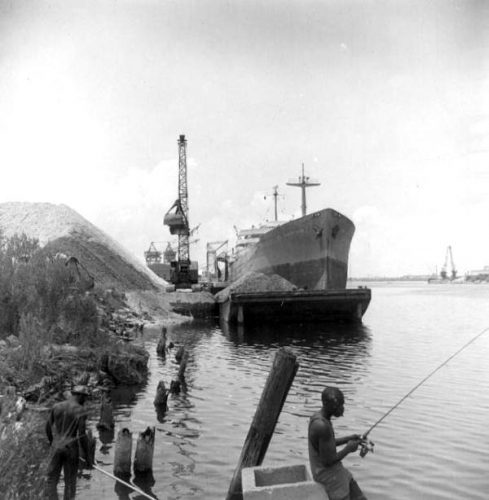
1970s
- The company dumps polluted wastewater from the facility into nearby Bishop Harbor, resulting in fish kills.
1980s
- Piney Point changes hands among multiple owners.
- Toxic gas from Piney Point operations is released into the air.
- A sulfuric acid leak at the facility spurs an evacuation.
1990s
- The Mulberry Corporation buys Piney Point, but the facility faces financial troubles.
- A dam breach and heavy rains cause high water at the site and the eventual dumping of wastewater into the Alafia River, resulting in a fish kill.
- Water from the phosphogypsum stacks leaks underground. FDEP fines Piney Point for these leaking ponds.
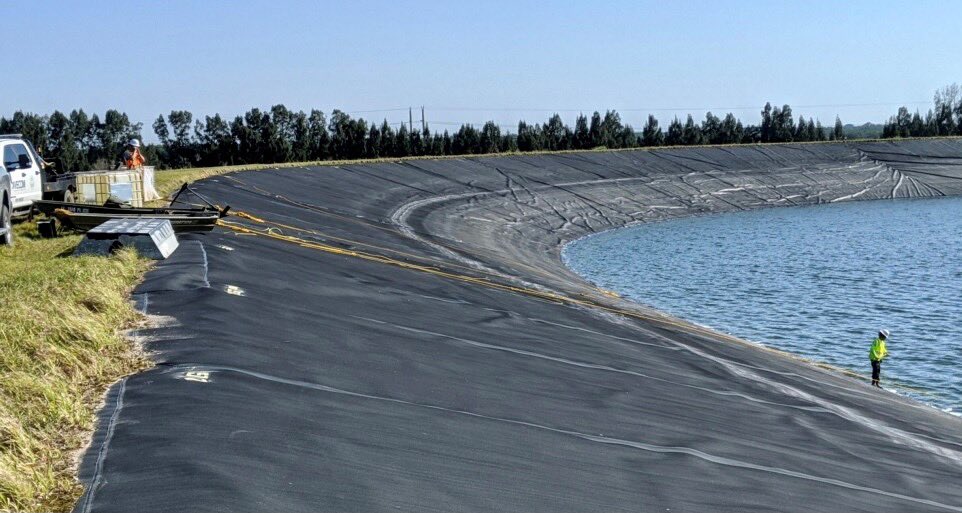
2000
- Piney Point owners face more financial struggles.
- Mulberry Corporation’s permit renewal for Piney Point is denied by the state.
2001
- Piney Point’s owners, Mulberry Corporation, file for bankruptcy and abandon Piney Point. It no longer functions as a phosphate processing plant.
- The U.S. Environmental Protection Agency, then FDEP, take over the site.
- Hurricane Gabrielle causes Piney Point’s ponds to overflow, and more wastewater is pumped in Bishop Harbor.
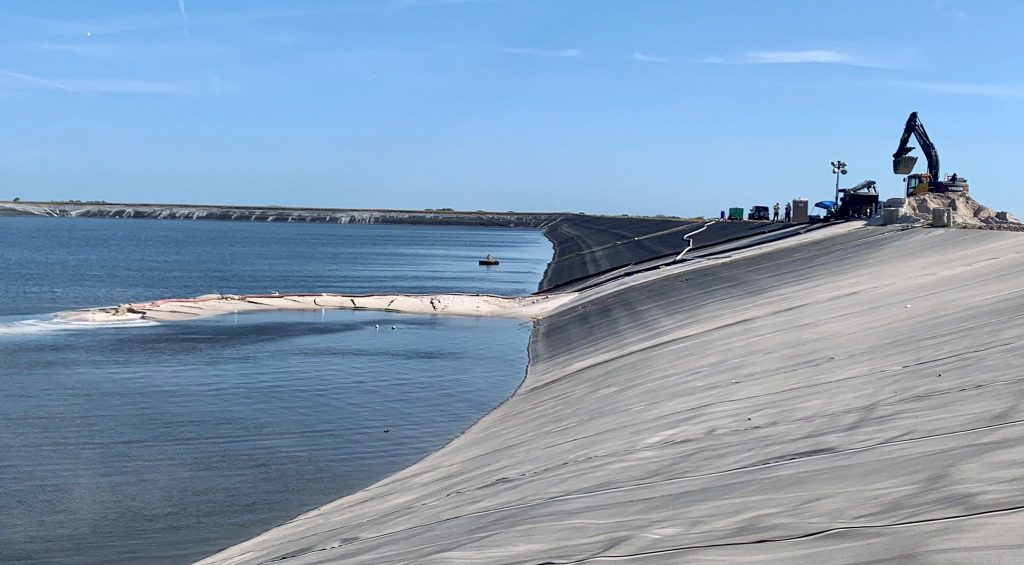
2002
- The state works to close Piney Point permanently and treat its wastewater, but heavy rains complicate the process.
- The Cargill company takes over and will be responsible for the site’s cleanup.
2004
- The state continues dumping wastewater from Piney Point into Bishop Harbor, leading to algal blooms and fish kills.
- Hurricane Francis causes a hole in one of the facility’s dikes, resulting in a wastewater leak.
2006
- HRK Holdings buys the property and plans to use it as a site to store dredge material, or sediment that is removed from the bottom of bodies of water to reshape land and water features and develop navigation tools, like boating channels. The company is tasked with maintaining the phosphogypsum stacks and the wastewater ponds.
2008
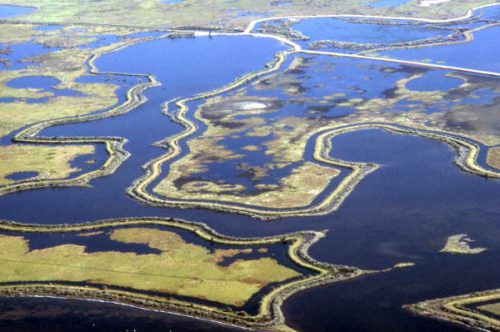
- The U.S. Army Corps releases a 72-page study warning against storing the dredge material, which it says might be catastrophic and cause a breach in Piney Point’s liner.
2011
- A wastewater leak caused by the dredging project results in an emergency discharge of millions of gallons of wastewater into Tampa Bay.
2013
- State officials first consider a plan to inject Piney Point wastewater deep underground.
2016
- The permit for the injection well is denied amidst environmental concerns.
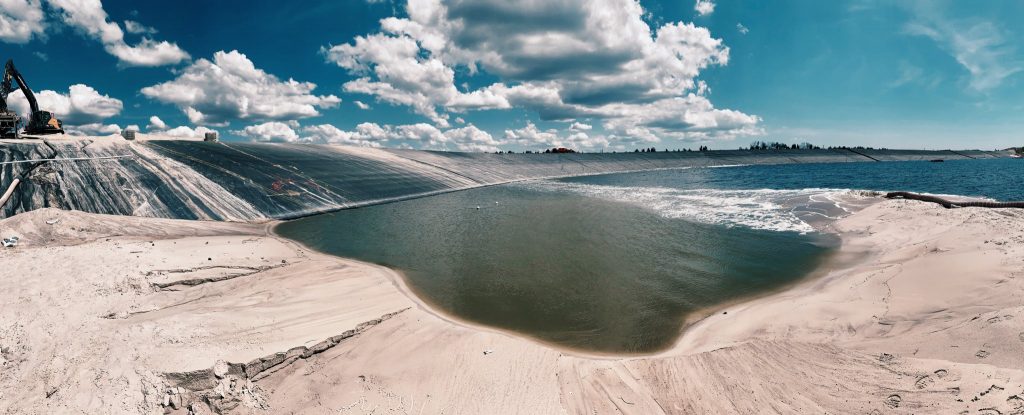
2020
- Officials warn that there are leaks in Piney Point’s reservoir liner above the water level and that there may be more failures below the surface. HRK, the owners, also identify flaws in the liner.
March 2021:
- A leak in the containment wall liner is discovered.
- To reduce pressure on the leak, officials begin pumping more than 200 million gallons of the reservoir’s polluted water into Tampa Bay.

April 2021:
- Responding to the risk of catastrophic flooding should the leak become a full-fledged breach in the liner, around 300 homes, as well as businesses and the nearby Manatee County Jail are evacuated.
- Florida Gov. Ron DeSantis declares a state of emergency in the surrounding counties.
- The pumping is halted to allow officials to use technology to treat the remaining water before releasing more.
- Florida State Senator Jim Boyd introduces an amendment to the state budget that would allocate $3 million to the cleanup effort, but officials note that total remediation could cost up to $200 million. DeSantis says that he will also redirect $15.4 million from the Florida Department of Environmental Protection’s existing budget toward the cleanup.
May 2021:
- Environmental groups publish a notice of intent to sue over the Piney Point crisis.
June 2021:
- In late June, the five environmental groups officially file a lawsuit in federal court against the governor, state and operators of Piney Point. It asks a federal judge to oversee the clean-up, closure and investigation of the old plant site and to ensure the waste is properly disposed of.
- FDEP again seeks to issue a permit to allow for pumping the contaminated wastewater deep underground, but faces objections from environmental organizations who say the pumping could contaminate the aquifer and Florida’s groundwater.
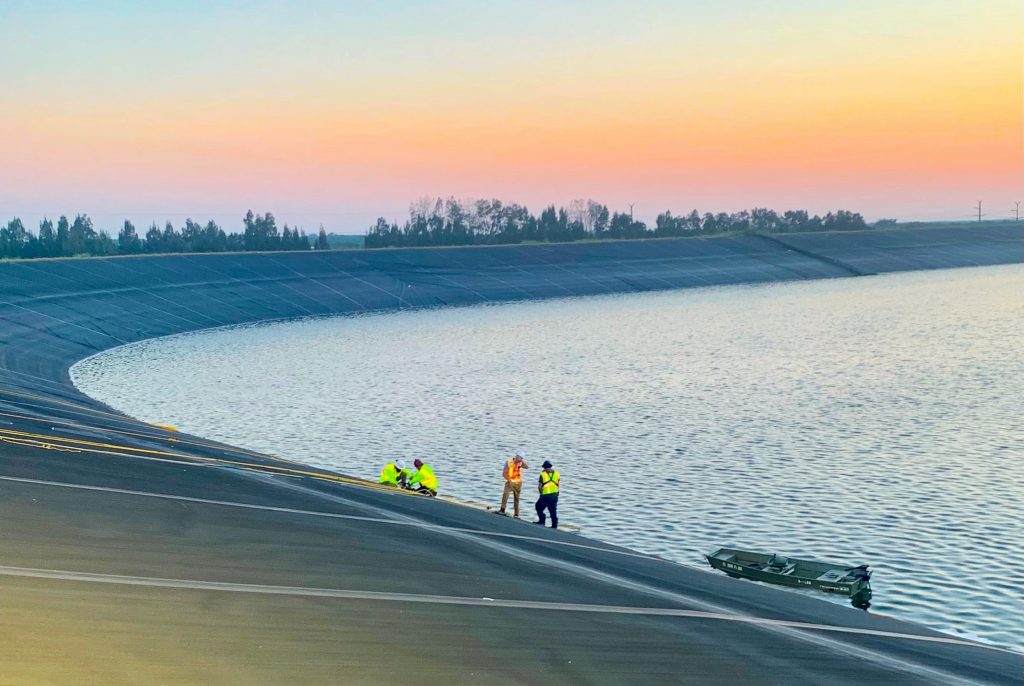
August 2021:
- Officials say another wastewater release could be possible at the Piney Point site as an independent receiver takes control of the former phosphate plant.
- FDEP files a lawsuit against HRK holdings, the current owner of Piney Point.
December 2021:
- The state seeks to dismiss the environmentalists’ lawsuit, stating they are already doing enough to fix the problem.
- The permit for the injection well is finally approved and issued.
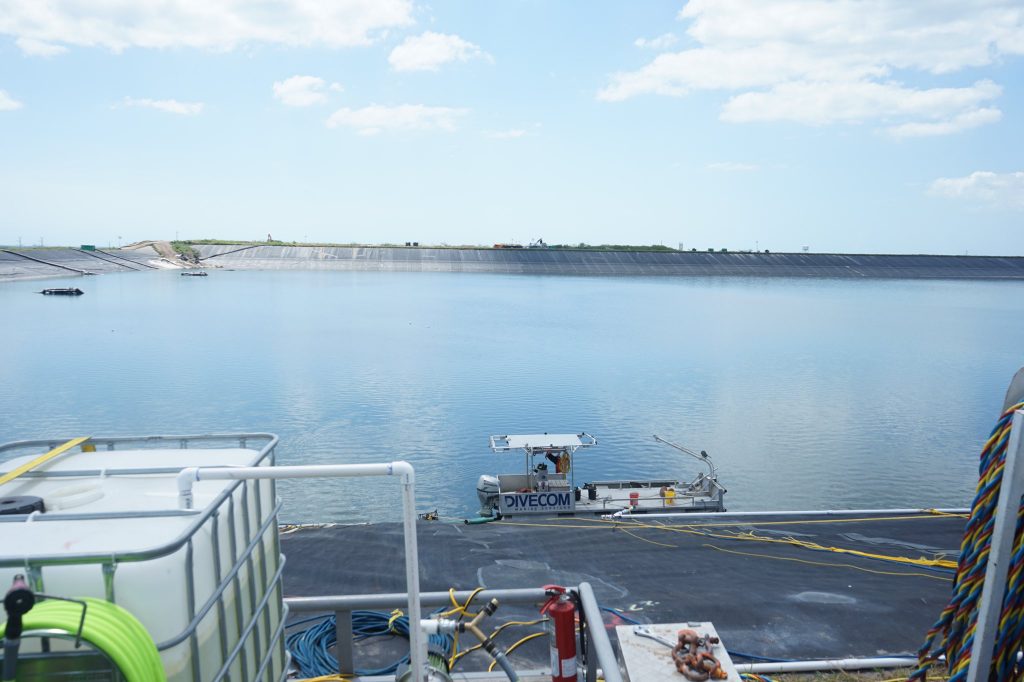
January 2022
- Piney Point still holds 397 million gallons of wastewater. Officials worry about how rainfall will affect water levels at the site.
February 2022
- Judges hear arguments on whether to dismiss the lawsuits against the state and Piney Point owners.
March 2022:
- The state approves a plan to close Piney Point. Officials predict the plan may be completed by December 2024.
- The state has now spent $85 million dollars on cleanup since the March 2021 leak.
What You Can Do
- Keep up with the Piney Point situation and the latest news/developments.
- Reduce the amount of nutrients you put into the environment by following best practices.
- Support organizations that are working to conserve Florida’s waterways.
Learn more:
- About phosphate mining and gypsum stacks.
- About where other phosphate stacks are located in Florida.